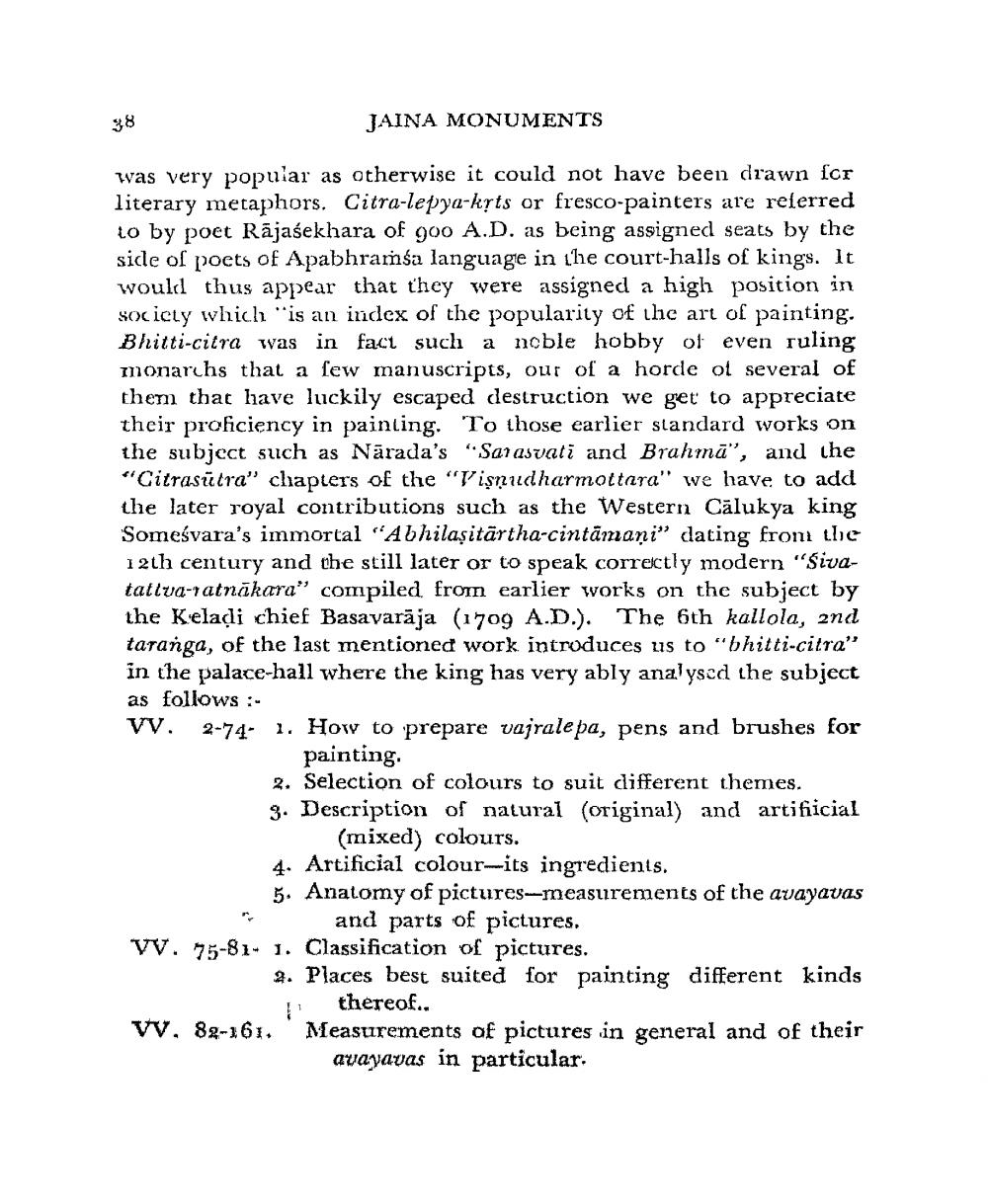________________
JAINA MONUMENTS
was very popular as otherwise it could not have been drawn for literary metaphors. Citra-lepya-krts or fresco-painters are relerred lo by poet Rājasekhara of goo A.D. as being assigned seats by the side of poets of Apabhramsa language in the court-halls of kings. It would thus appear that they were assigned a high position in society which is an index of the popularity of the art of painting Bhitti-citra was in fact such a noble hobby of even ruling monarchs that a few manuscripts, our of a horde of several of them that have luckily escaped destruction we get to appreciate their proficiency in painting. "To those earlier standard works on the subject such as Nārada's "Sarasvati and Brahmā”, and the “Citrasūtra" chapters of the "Vişnudharmottara" we have to add the later royal contributions such as the Western Calukya king Someśvara's immortal "Abhilaşitārtha-cintāmaņi" dating front the 12th century and the still later or to speak correctly modern "Sivatativa-ratnākara" compiled from earlier works on the subject by the Keladi chief Basavarāja (1709 A.D.). The 6th kallola, and taranga, of the last mentioned work introduces us to "bhitti-citra" in the palace-hall where the king has very ably analysed the subject as follows :VV. 2-74- 1. How to prepare vajrale pa, pens and brushes for
painting 2. Selection of colours to suit different themes. 3. Description of natural (original) and artificial
(mixed) colours. 4. Artificial colour-its ingredients. 5. Anatomy of pictures-measurements of the avayavas
and parts of pictures. vv. 75-81- 1. Classification of pictures.
2. Places best suited for painting different kinds
thereof.. VV, 89-361. Measurements of pictures in general and of their
avayavas in particular:




